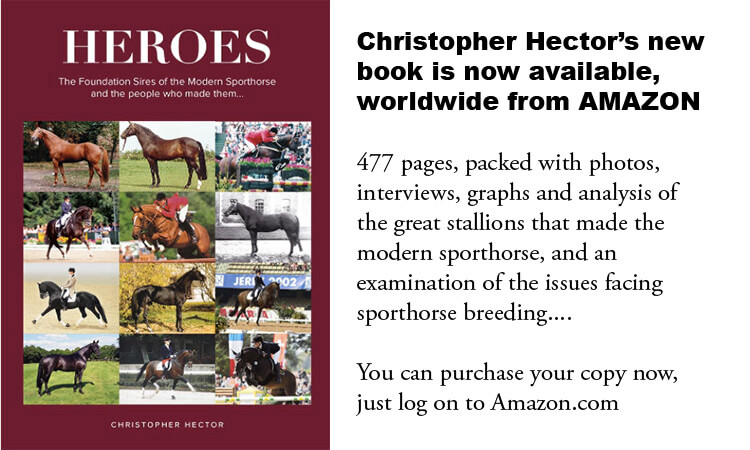Christopher Hector honors some of the stallions that are making their mark in the world of dressage…
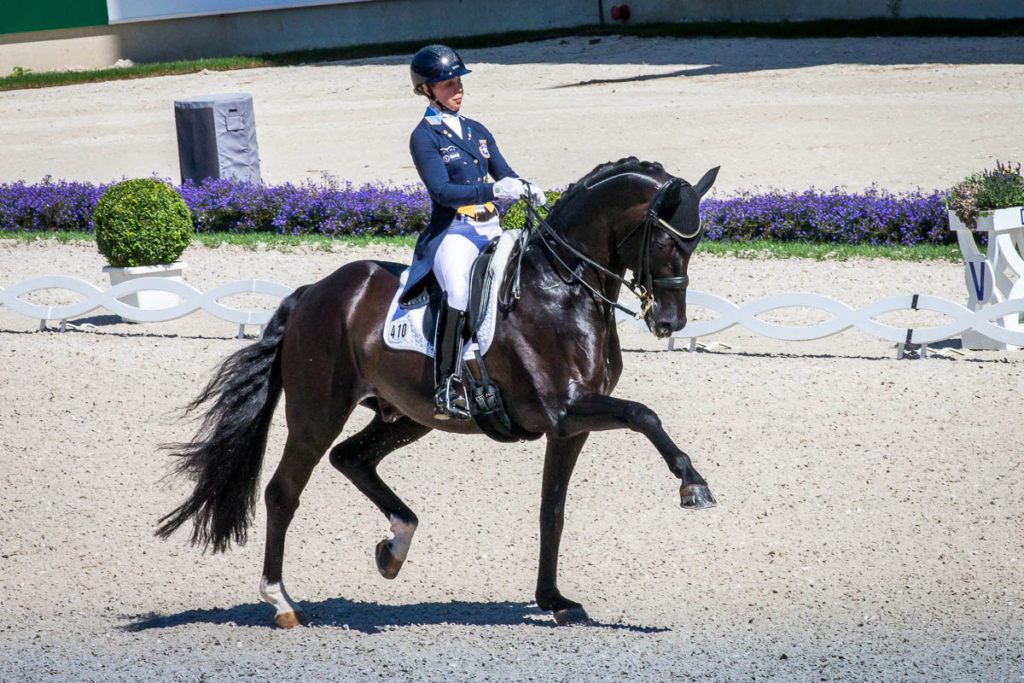
The Prix St Georges at Aachen this year, was a triumph for Dante Weltino (above)…
I have always loved this stallion, always wondered why he wasn’t just a little bit more successful, always thought I would be happy to send a mare to him.
He was the only stallion with more than one entry in the small tour, and both of them were lovely. The Dutch rider, Denise Nekeman and Kansas STH (out of a Fürst Heinrich mare) was the first to go and paid the penalty for it, the judges were very mean, scoring 64.5 for a very elegant combination.
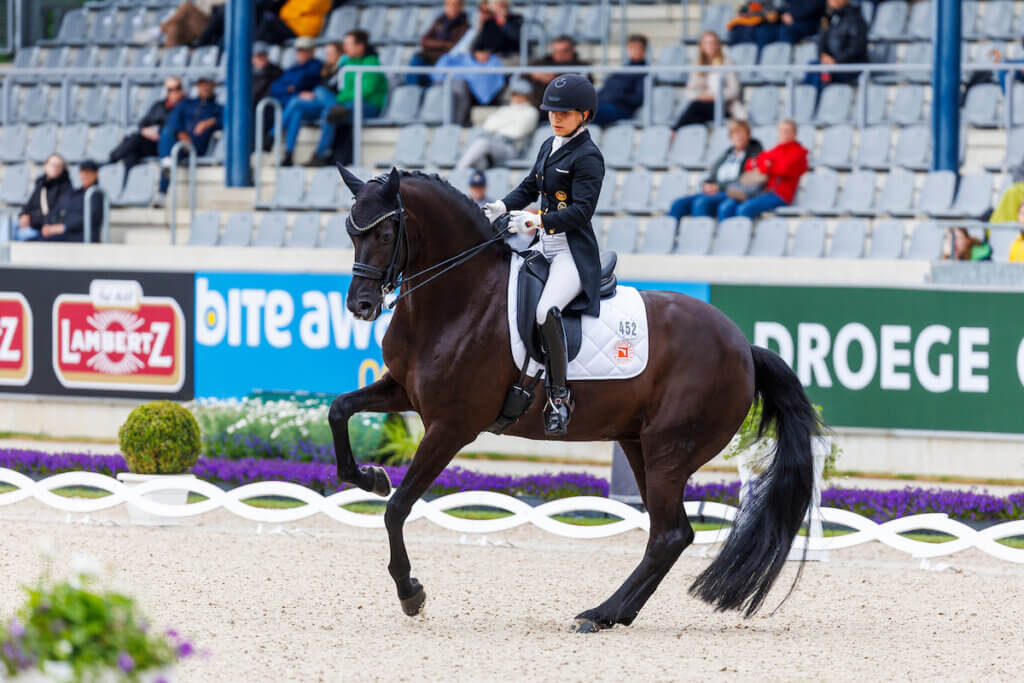
Dante’s Pearl
Second place went to Charlott-Maria Schürmann and the exquisite black mare, Dante’s Pearl (San Amour), 72.088, just behind Frederic Wandres and Quizmaster FRH on 73.97. Quizmaster is by the Quaterback son, Quasar de Charry out of a Velten Third mare.
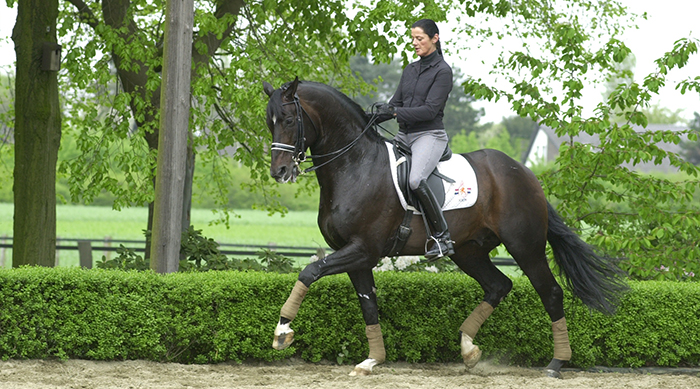
Welt Hit II
Dante Weltino was bred by Olaf Bahis, out of his foundation mare, Rihanna, who was by the most successful son of Weltmeyer, Welt Hit II, and out of a mare by the Thoroughbred Noble Roi. Dante Weltino is by Danone I, very much the product of master breeder, Burkhard Wahler. Danone is by the star of Wahler’s Klosterhof Medingen, De Niro, out of Well Done by Weltmeyer, out of a mare by the first of the Hanoverian dressage specialists, Bolero.
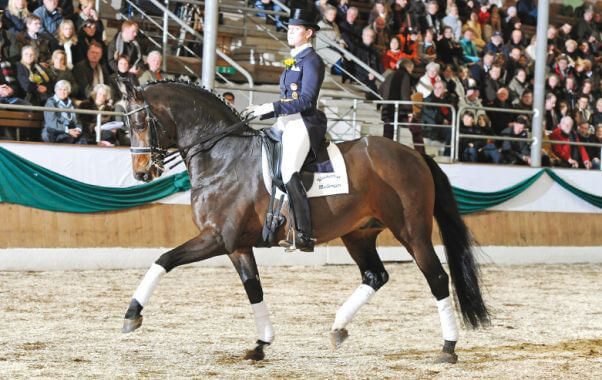
Danone I
Weltmeyer, remember him? Well Dante Weltino, has two crosses of this now largely forgotten stallion.
So far Dante Weltino is the sire of 28 approved sons and 11 Grand Prix horses, though none of the sons, or Grand Prix competitors have set the world aflame.
Dante Weltino started 2024 in style, with a Grand Prix win at Lier on a 74. The previous December he had his most lucrative outing, winning €21,000 for a fourth in the Freestyle at Stockholm. His rider throughout his career has been the Swede, Therese Nilshagen, she says:
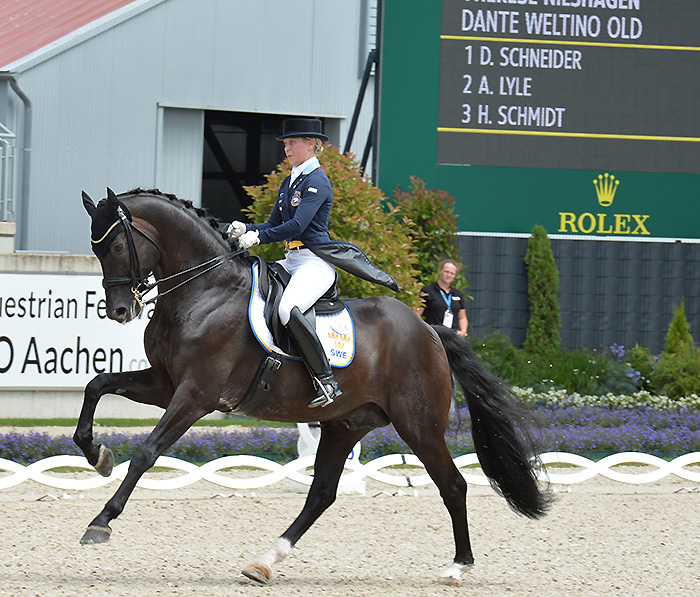
“Dante’s willingness to perform is really second to none. Riding him is pure pleasure. Nature has set him no limits, just like his offspring.”
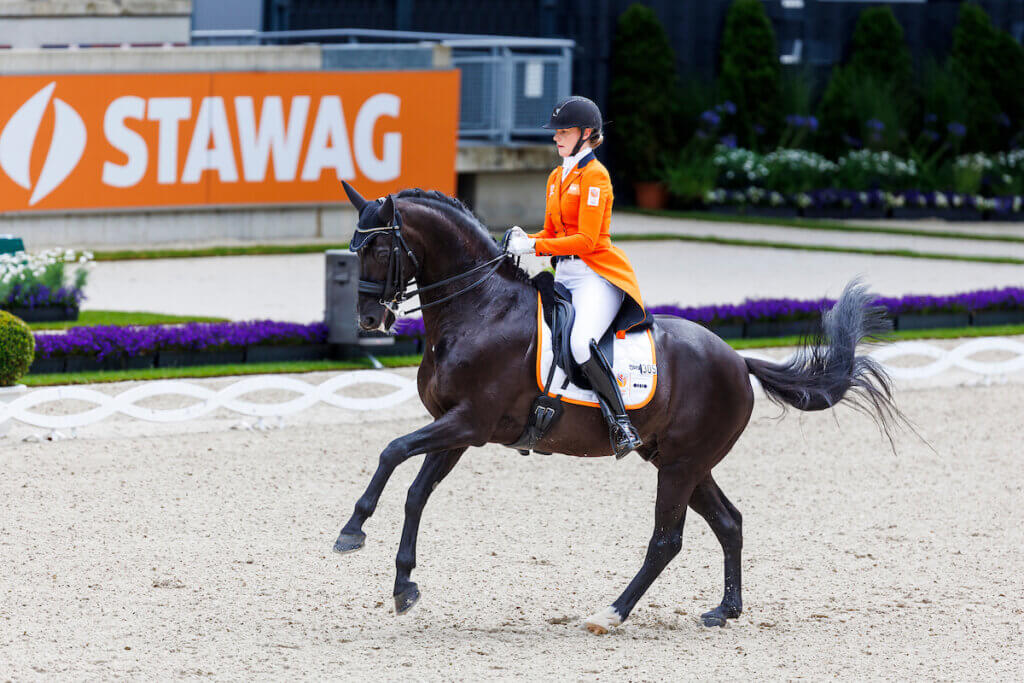
Boston STH
The five star Grand Prix was a triumph for another Dutch stallion, this time the Jazz son, Johnson, out of a Flemmingh mare. At one stage on the draw there were three of his get in a row: Inoraline W (out of an Amiral mare), Boston STH (out of a Quattro mare) and Jolene (Continue), further down the list was yet another, Meggle’s Boston (Partout).
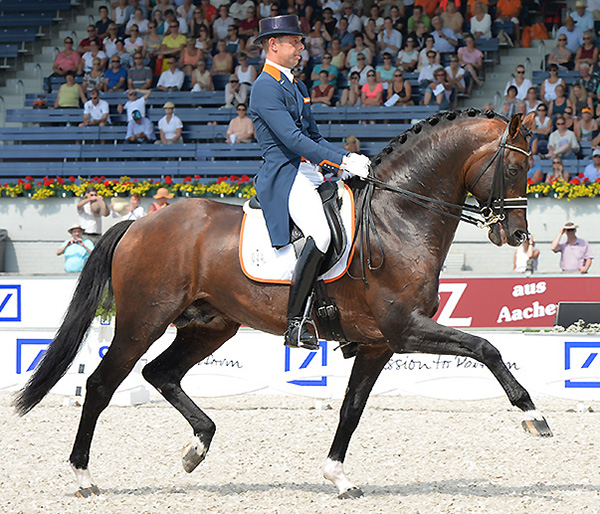
Johnson
Johnson is a controversial stallion. I have friends, who are experienced horse people and top trainers, who won’t have one in their barn, not even a horse out of a Johnson mare, ‘dangerous’ is their assessment.
German horse breeder, Hannes Brünning says he tried, because he likes the idea of breeding to a Grand Prix stallion, but eventually gave up on the bay:
“I tried him twelve years ago and phew, really hot! I had two Johnsons out of the dam line of Rubinstein, very easy going, top interior dam line but the foals had too much power, that’s why I am not using him. Normally Johnson is a stallion I would use. A Grand Prix horse, he has very very good offspring, I used him but it was too wild.”
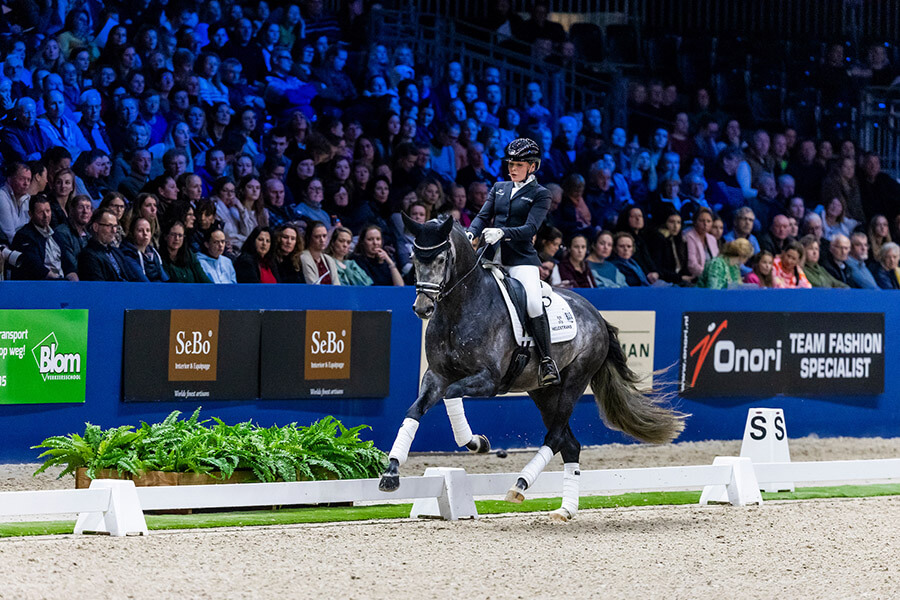
Proud James
However Hannes is happy to breed to the current flavour of the month in Holland and Germany, the grey stallion, Proud James, who is by Jameson out of a Johnson mare.
Devenda Dijkstra rode the highest placed of the Johnson quartet, Hero into 16th with a score of 69.848 (Johnsons took places 16, 17 and 18). Now Hero is out of a mare by the Rubinstein son, 007, which should add cool to the equation but I asked Devenda was she a hero to ride the gelding. Not at all, it turns the horse is the hero of this story:
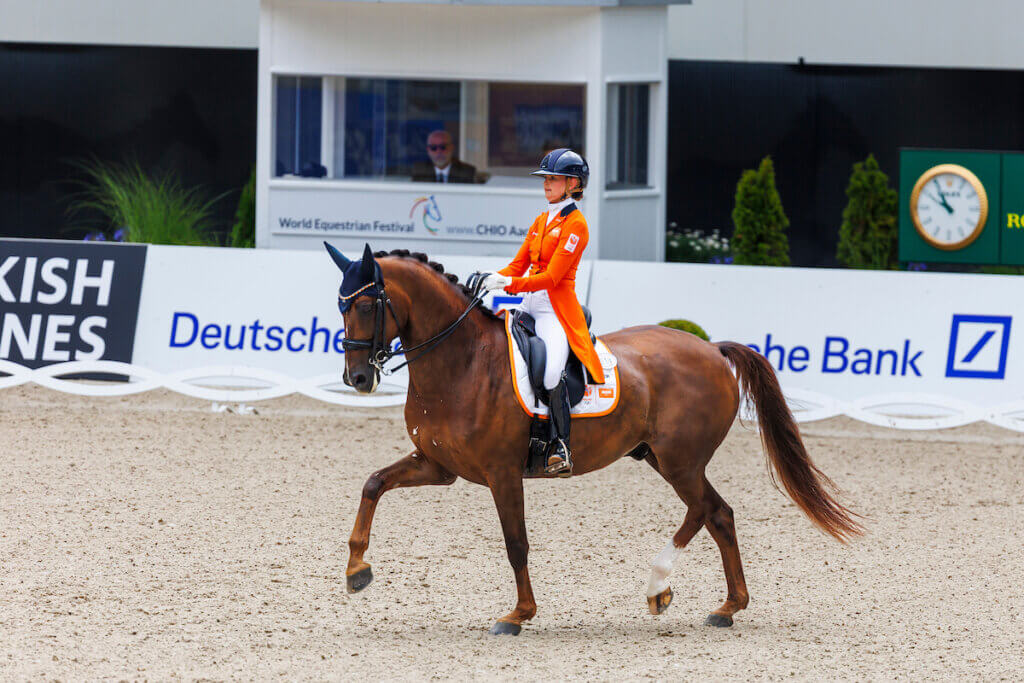
Devenda Dijkstra and Hero
“He is so special because he is my first horse ever. I started with him six years ago on the lowest level when he was six years old. I’d never done a flying change before. He took me to the European Under 25 championship and we won team silver, and in 2022 I started competing in senior competition, now we are here!”
The Johnsons have a bit of a mixed reputation, some people think they are too hot, did you find him difficult…
“No. You can make him sharp, but in a really, really nice way. He is never scared or bucking, he is always doing his best, at home or at competitions. I can ride outside with him, I can go to the beach with him. He is the only Johnson I’ve ridden so I cannot say about others, but this one is very easy to ride.”
Do you think that is to do with the OO7/Rubinstein mare line he is out of?

Devenda rolls her eyes and turns to her partner (and trainer) Laurens van Lieren, and he has a real handle on the breeding:
“I think what makes this horse special is the 007 who is Rubinstein / Doruto and he also has a direct line to Doruto in the mother line.”
You’ve ridden Johnsons, did you find them hot?
“I’ve ridden quite a few. Hot, yeah, sometimes. This one is sharp, but in a very good way. He is always trying to please his rider, and sharp for her is wonderful, for her to ride a big horse that didn’t have that sharpness would be very difficult.”
He looks so rideable…
“His rideability is his best feature. Everybody says, oh he’s so talented for his piaffe / passage, but his best feature is the rideability and the mind set to never want to make a mistake and really do it for the rider. It makes him very special.”
Hero’s pedigree is certainly very interesting. 007 is out of the Doruto mare, Gelbria, who was a full-sister to Olympic Barbria, who carried two generations of the Bartels family – Tineke and Imke – in international Grand Prix. Hero’s grand-dam, Myrthe is by Ramiro, out of the Doruto mare, Wanda.
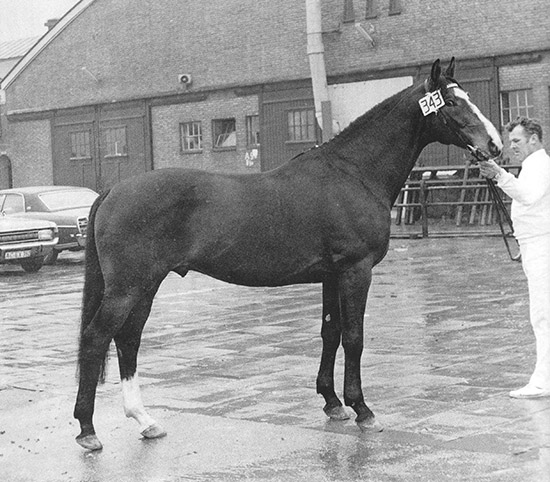
Doruto
The German Trakehner, Doruto, was one of the very first Dutch dressage sires. He arrived in Holland in 1964 and proceeded to sire many top dressage horses, although they were described as late developers who only came into their own when they hit FEI level. By the end of his career, Doruto had produced some 20 Grand Prix dressage horses, the most famous of which was Ideaal ridden first by Jo Hinnemann and then by Sven Rothenberger. Doruto was put down in 1988.
The Grand Prix was won on fine style by Isabell Werth on the mare, Wendy de Fontaine, who featured in my story on ghosts and geldings, since her sire, Sezuan has suffered the unkindest of cuts. Wendy is out of a mare by the Sandro Hit son, Soprano, out of a Danish mare by Solos Landtinus
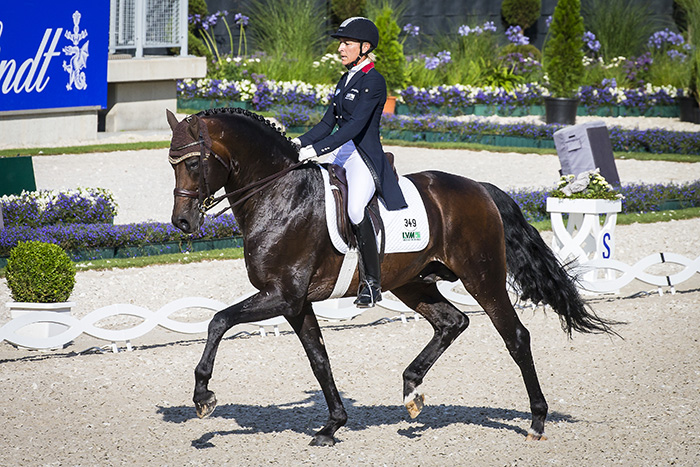
Second to a superb stallion, Franziskus (Fidertanz / Alabaster / Rubinstein) and Ingrid Klimke, riding their way into a team for Paris. You would think the mare owners would flock to the horse – not only is the sixteen-year-old stallion, a proven international star, but he is also an exceptionally handsome horse. Does he get mares? Of course not, they go to pretty three year olds with glossy brochures…
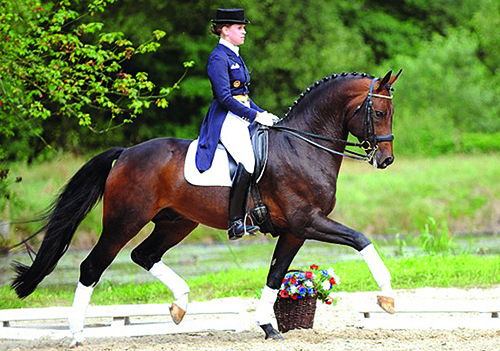
Fidertanz
At this point, it might be apposite to pay tribute to an old stallion, Fidertanz, who was the sire of two entries, Franziskus and Fiderprincess (Wolkenstein II). He is the grand-sire, via his excellent son, Foundation, of the Danish entry, Favour Gersdorf, and through another son, Flanagan, of the Swiss horse, Fibonacci.
Fidertanz’s sire Fidermark is the dam sire of the Vitalis stallion, First Step Valentin and he is the dam sire of All We Need by All At Once.
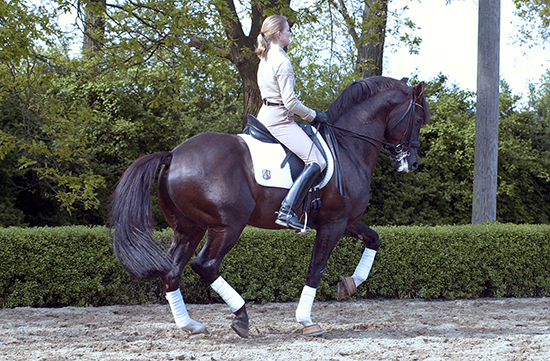
Fidermark, sire of Fidertanz
Fidertanz is the product of the breeding program of one of those stalwart Hanoverian breeders, the Schult family, and as a youngster was a star at the Bundeschampionat. He was the winner of his performance test at Neustadt/Dosse before going on to compete Grand Prix, although his international career was limited to three appearances in 2015, with his best result as 64.706 in the Special at Roosendaal. At the age of 22 he stands at the Schockemöhle station at Muhlen and continues to be a valuable disseminator of the blood of the most influential sporthorse sire of them all, the Thoroughbred Furioso.
There were two stallions with two representatives each. Vitalis (and his sire Vivaldi, had one), and Bordeaux who produced the third placed Bluetooth (out of a Riccione mare) with Frederic Wandres and in eleventh, Bohemian (Samarant) with his new American rider, Endel Ots.
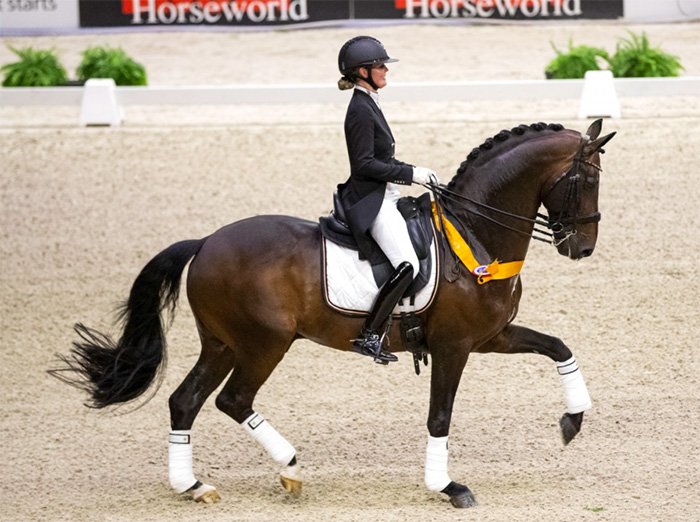
Bordeaux
Bordeaux is by United who is by the largely Holsteiner, Krack C, but there is plenty of Trakehner on his pedigree. United’s dam, Nessica is by the Grand Prix Trakehner, Partout, while Bordeaux is out of a Gribaldi mare, with Donnerhall on the final line to round out the picture. Bordeaux competed Grand Prix with a number of riders, with moderate success. Of his eleven starts, his biggest payout was €2,234 for a third at Hamburg in the Freestyle.
In all the Dutch book contributed eleven of the 35 entries in the Aachen 5* Grand Prix, a triumph for the KWPN? Yes and no. If the German studbooks did the sensible thing and came together in one book, they would be in front with fourteen representatives: Hanoverian, 4; Westfalien, 4; Oldenburg, 5 and German Sporthorse, one.
